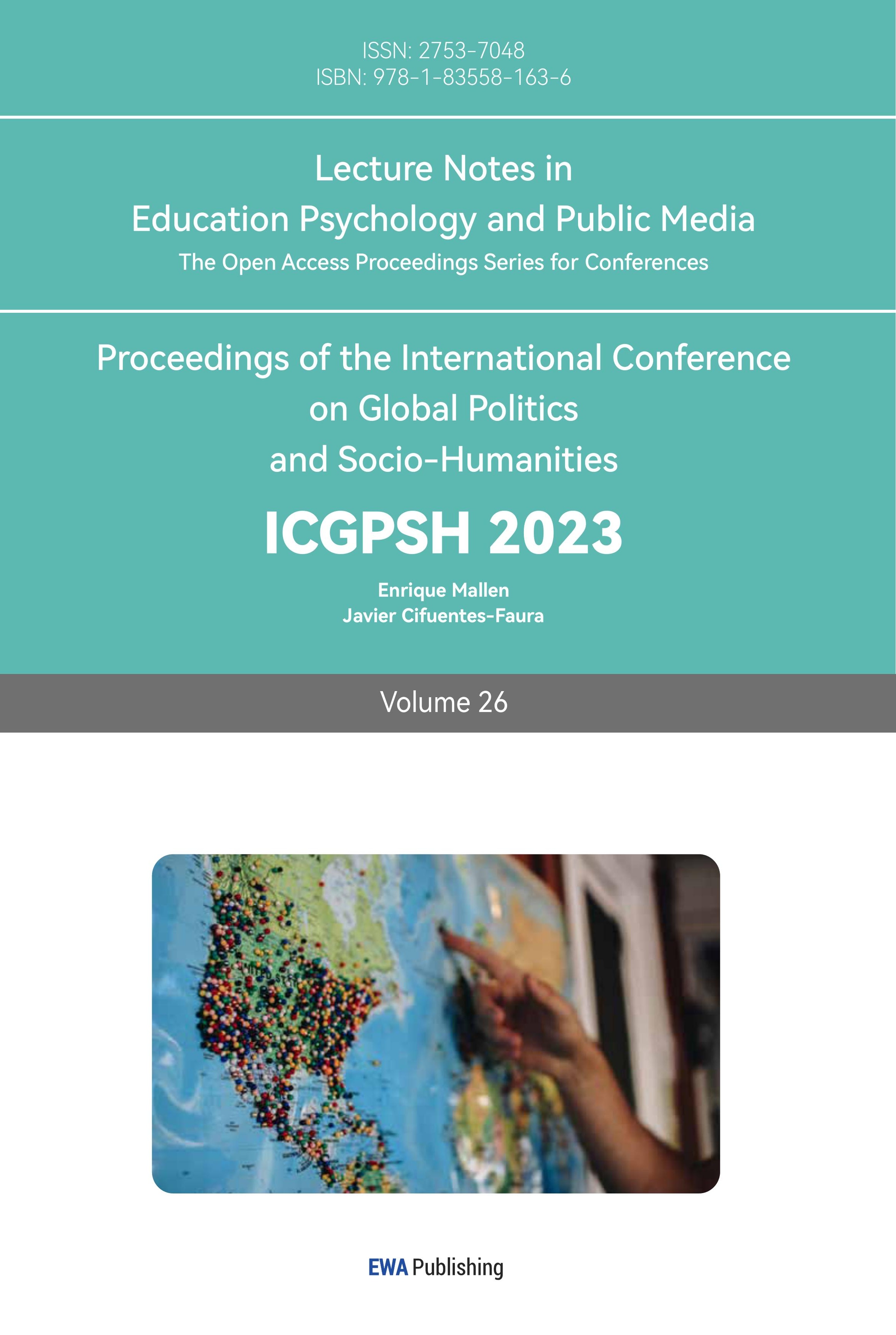References
[1]. Beijing Municipal Commission of Transport. (2018, August 19). Notice on Issuing the Guiding Opinions on Accelerating the Road Testing of Autonomous Driving Vehicles in Beijing (Trial) and the Implementation Rules for the Management of Road Testing of Autonomous Driving Vehicles in Beijing (Trial). Beijing Municipal Commission of Transport. http://jtw.beijing.gov.cn/xxgk/flfg/zcfg/201912/t20191231_1547520.html.
[2]. The State Council of The People’s Republic of China. Notice of Three Ministries and Commissions on Issuing the “Management Specification for Road Testing and Demonstration Applications of Intelligent Connected Vehicles (Trial).” Ministry of Industry and Information Technology, Ministry of Public Security, Ministry of Transport, 27 July 2021, https://www.gov.cn/zhengce/zhengceku/2021-08/03/content_5629199.htm. Accessed 19 Sept. 2023.
[3]. “Automated and Electric Vehicles Act 2018.” Legislation. Gov.Uk, 2018, https://www.legislation.gov.uk/ukpga/2018/18/part/1/enacted. Accessed 19 Sept. 2023.
[4]. Cao, Jianfeng, and Yanhong Zhang. “Comments on the UK Automatic and Electric Vehicles Act: Innovation of Insurance and Liability Rules for Autonomous Vehicle.” Information Security and Communication Confidentiality, vol. 10, Oct. 2018, https://doi.org/CNKI:SUN:TXBM.0.2018-10-022.
[5]. Xiaojun Tian & Yang Liu, Enlightenment of the United States and Germany speeding up the improvement of automatic driving system to China, Tencent Research Institute (2017), https://www.tisi.org/?p=16110 (last visited Jul 11, 2022).
[6]. Frontiers of Intelligent Transportation Technology. “American Autonomous Vehicle Regulations.” Https://Baijiahao.Baidu.Com/s?Id=1717199228772229841&wfr=spider&for=pc, 23 Nov. 2021, https://www.163.com/dy/article/GPN4OFSV0517N2FF.html. Accessed 19 Sept. 2023.
[7]. U.S. Department of Transportation. “U.S. Department of Transportation Releases Policy on Automated Vehicle Development.” US Department of Transportation, 1 Aug. 2019, https://www.transportation.gov/briefing-room/us-department-transportation-releases-policy-automated-vehicle-development. Accessed 19 Sept. 2023.
[8]. Eggert, David. “Michigan Moves to Not Require Human in Driverless Test Cars.” Phys.Org, 7 Sept. 2016, https://phys.org/news/2016-09-michigan-require-human-self-driving-cars.html. Accessed 19 Sept. 2023.
[9]. The Central People’s Government of the People’s Republic of China. Road Traffic Safety Law of the People’s Republic of China. 28 Oct. 2003, http://www.gov.cn/banshi/2005-08/23/content_25575.htm. Accessed 19 Sept. 2023.
[10]. Jue Feng, Civil tort liability for damage caused by autonomous vehicle, 6 China law (2018).
[11]. Jianan Liu, Imputation principles and attribution of liability for motor vehicle traffic accidents, 5 Politics and law (2010).
Cite this article
Wang,B. (2023). Approaches to Autonomous Driving Vehicle Traffic Accidents Liability in China. Lecture Notes in Education Psychology and Public Media,26,167-174.
Data availability
The datasets used and/or analyzed during the current study will be available from the authors upon reasonable request.
Disclaimer/Publisher's Note
The statements, opinions and data contained in all publications are solely those of the individual author(s) and contributor(s) and not of EWA Publishing and/or the editor(s). EWA Publishing and/or the editor(s) disclaim responsibility for any injury to people or property resulting from any ideas, methods, instructions or products referred to in the content.
About volume
Volume title: Proceedings of the International Conference on Global Politics and Socio-Humanities
© 2024 by the author(s). Licensee EWA Publishing, Oxford, UK. This article is an open access article distributed under the terms and
conditions of the Creative Commons Attribution (CC BY) license. Authors who
publish this series agree to the following terms:
1. Authors retain copyright and grant the series right of first publication with the work simultaneously licensed under a Creative Commons
Attribution License that allows others to share the work with an acknowledgment of the work's authorship and initial publication in this
series.
2. Authors are able to enter into separate, additional contractual arrangements for the non-exclusive distribution of the series's published
version of the work (e.g., post it to an institutional repository or publish it in a book), with an acknowledgment of its initial
publication in this series.
3. Authors are permitted and encouraged to post their work online (e.g., in institutional repositories or on their website) prior to and
during the submission process, as it can lead to productive exchanges, as well as earlier and greater citation of published work (See
Open access policy for details).
References
[1]. Beijing Municipal Commission of Transport. (2018, August 19). Notice on Issuing the Guiding Opinions on Accelerating the Road Testing of Autonomous Driving Vehicles in Beijing (Trial) and the Implementation Rules for the Management of Road Testing of Autonomous Driving Vehicles in Beijing (Trial). Beijing Municipal Commission of Transport. http://jtw.beijing.gov.cn/xxgk/flfg/zcfg/201912/t20191231_1547520.html.
[2]. The State Council of The People’s Republic of China. Notice of Three Ministries and Commissions on Issuing the “Management Specification for Road Testing and Demonstration Applications of Intelligent Connected Vehicles (Trial).” Ministry of Industry and Information Technology, Ministry of Public Security, Ministry of Transport, 27 July 2021, https://www.gov.cn/zhengce/zhengceku/2021-08/03/content_5629199.htm. Accessed 19 Sept. 2023.
[3]. “Automated and Electric Vehicles Act 2018.” Legislation. Gov.Uk, 2018, https://www.legislation.gov.uk/ukpga/2018/18/part/1/enacted. Accessed 19 Sept. 2023.
[4]. Cao, Jianfeng, and Yanhong Zhang. “Comments on the UK Automatic and Electric Vehicles Act: Innovation of Insurance and Liability Rules for Autonomous Vehicle.” Information Security and Communication Confidentiality, vol. 10, Oct. 2018, https://doi.org/CNKI:SUN:TXBM.0.2018-10-022.
[5]. Xiaojun Tian & Yang Liu, Enlightenment of the United States and Germany speeding up the improvement of automatic driving system to China, Tencent Research Institute (2017), https://www.tisi.org/?p=16110 (last visited Jul 11, 2022).
[6]. Frontiers of Intelligent Transportation Technology. “American Autonomous Vehicle Regulations.” Https://Baijiahao.Baidu.Com/s?Id=1717199228772229841&wfr=spider&for=pc, 23 Nov. 2021, https://www.163.com/dy/article/GPN4OFSV0517N2FF.html. Accessed 19 Sept. 2023.
[7]. U.S. Department of Transportation. “U.S. Department of Transportation Releases Policy on Automated Vehicle Development.” US Department of Transportation, 1 Aug. 2019, https://www.transportation.gov/briefing-room/us-department-transportation-releases-policy-automated-vehicle-development. Accessed 19 Sept. 2023.
[8]. Eggert, David. “Michigan Moves to Not Require Human in Driverless Test Cars.” Phys.Org, 7 Sept. 2016, https://phys.org/news/2016-09-michigan-require-human-self-driving-cars.html. Accessed 19 Sept. 2023.
[9]. The Central People’s Government of the People’s Republic of China. Road Traffic Safety Law of the People’s Republic of China. 28 Oct. 2003, http://www.gov.cn/banshi/2005-08/23/content_25575.htm. Accessed 19 Sept. 2023.
[10]. Jue Feng, Civil tort liability for damage caused by autonomous vehicle, 6 China law (2018).
[11]. Jianan Liu, Imputation principles and attribution of liability for motor vehicle traffic accidents, 5 Politics and law (2010).









